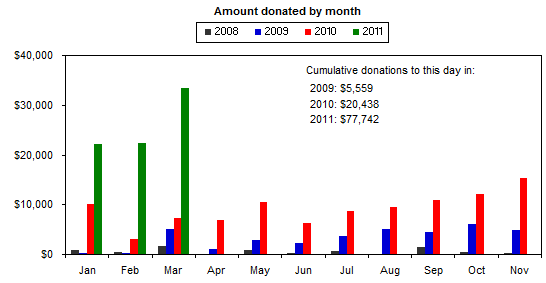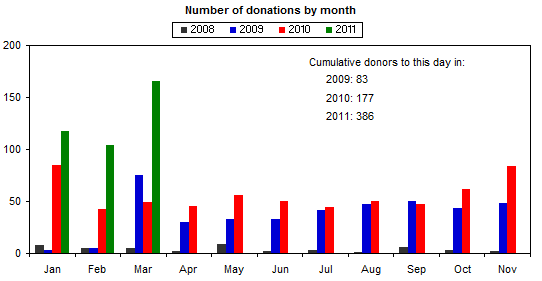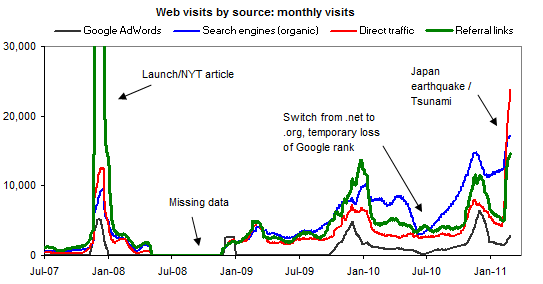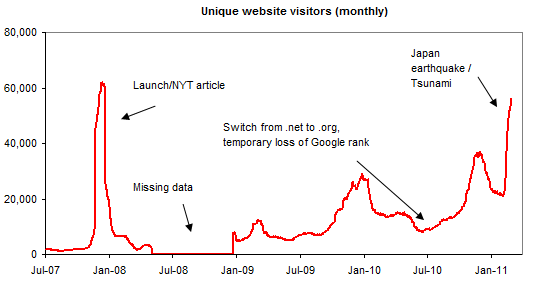The most specific quote we’ve seen about a charity’s long-term plans in Japan comes from a Seattle Times interview with a Mercy Corps representative.
We are going to do post-trauma work with kids, and we are looking at how to make that really culturally appropriate … We are also going to get involved in the local economy. We are probably going to distribute vouchers that people can use to get into the stores as they reopen and buy goods, and pump up the local economy. We are going to look at small businesses that don’t have insurance and don’t have access to government funding, and may need support.
Our question: why vouchers and services, and not cash?
We’ve written before about the appeal of giving out cash as the simplest way to help people. This approach seems to have had strong results in Zambia and among the homeless in London – two environments for which it’s easy to think of problems with cash transfers (recipients may be undereducated, suffer from dysfunctional economic environments or even be mentally ill). In Japan, unlike in these situations, we can’t think of a single reason that survivors will need Mercy Corps (or anyone else) to provide for them, instead of handing donations over directly and empowering them to rebuild their own lives.
This feeling is compounded by Mercy Corps’s discussion of the Comfort for Kids program it is importing, which makes it clear that there could be serious challenges in adapting it to Japanese culture. With cash, survivors could decide what programs are best for them, rather than pinning their hopes on Mercy Corps’s ability to overcome these challenges.
In the past, we’ve withheld judgment on the value of giving out cash, because we don’t see any charities doing it consistently and we recognize that there are concerns. But if we see more groups taking the Mercy Corps approach to Japanese survivors – giving out constrained “vouchers” and adapting an imported child care program rather than giving cash to people who were fully self-sufficient before the disaster -we’re going to put less credence in these concerns. We’ll put more credence in the other possibility: that nonprofits are more interested in empowering themselves than in empowering the people they’re supposed to help.
We’re supporters of Saundra Schimmelpfennig’s Day Without Dignity, which encourages donors to do meaningful things to help others instead of feel-good things to help themselves. One of the core ideas she has promoted is that of giving cash, not supplies. We think it’s worth noting that donors may not be the only ones guilty of giving patronizing gifts: perhaps nonprofits themselves should be thinking more about when the best gift is a check with no strings attached.




